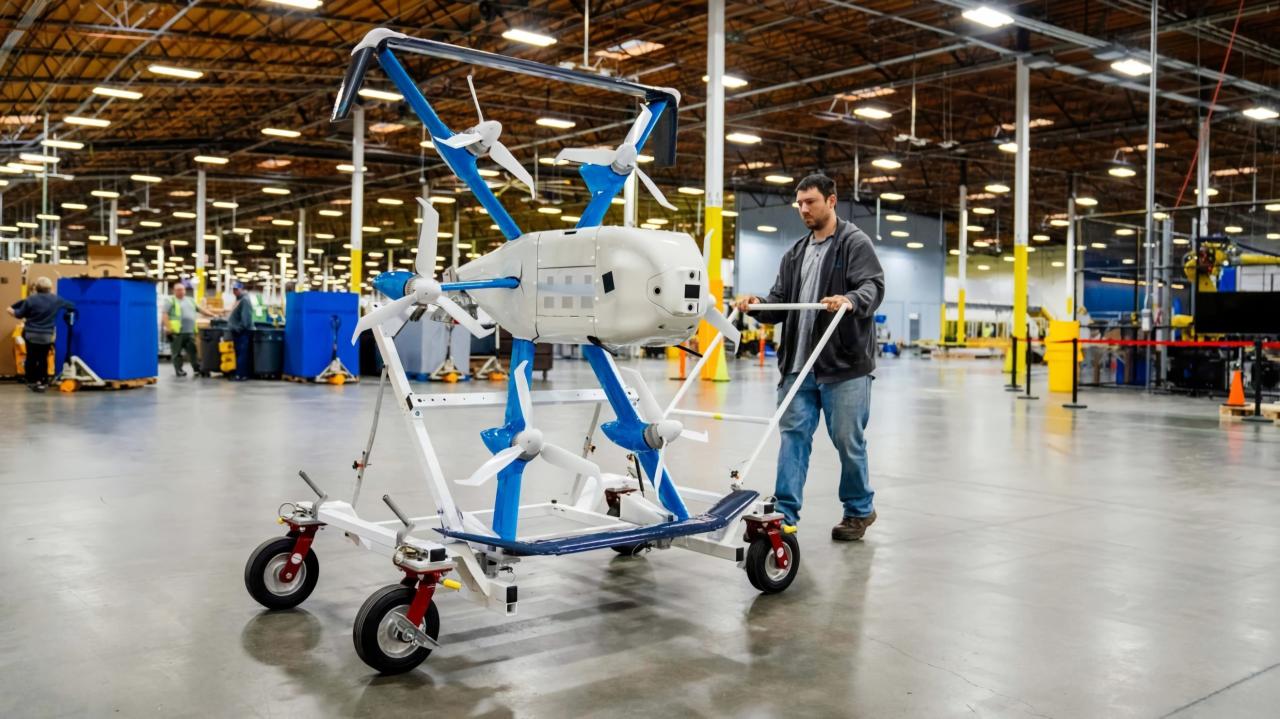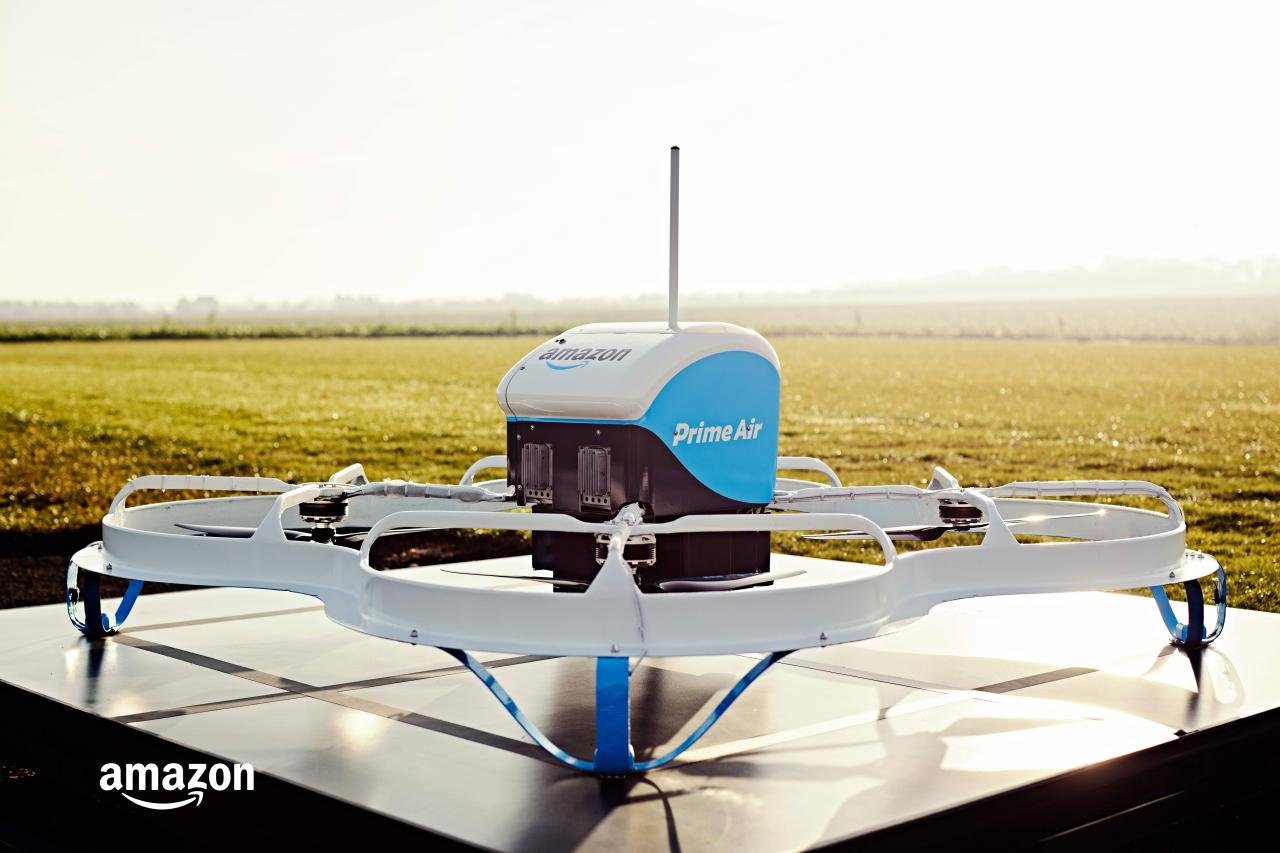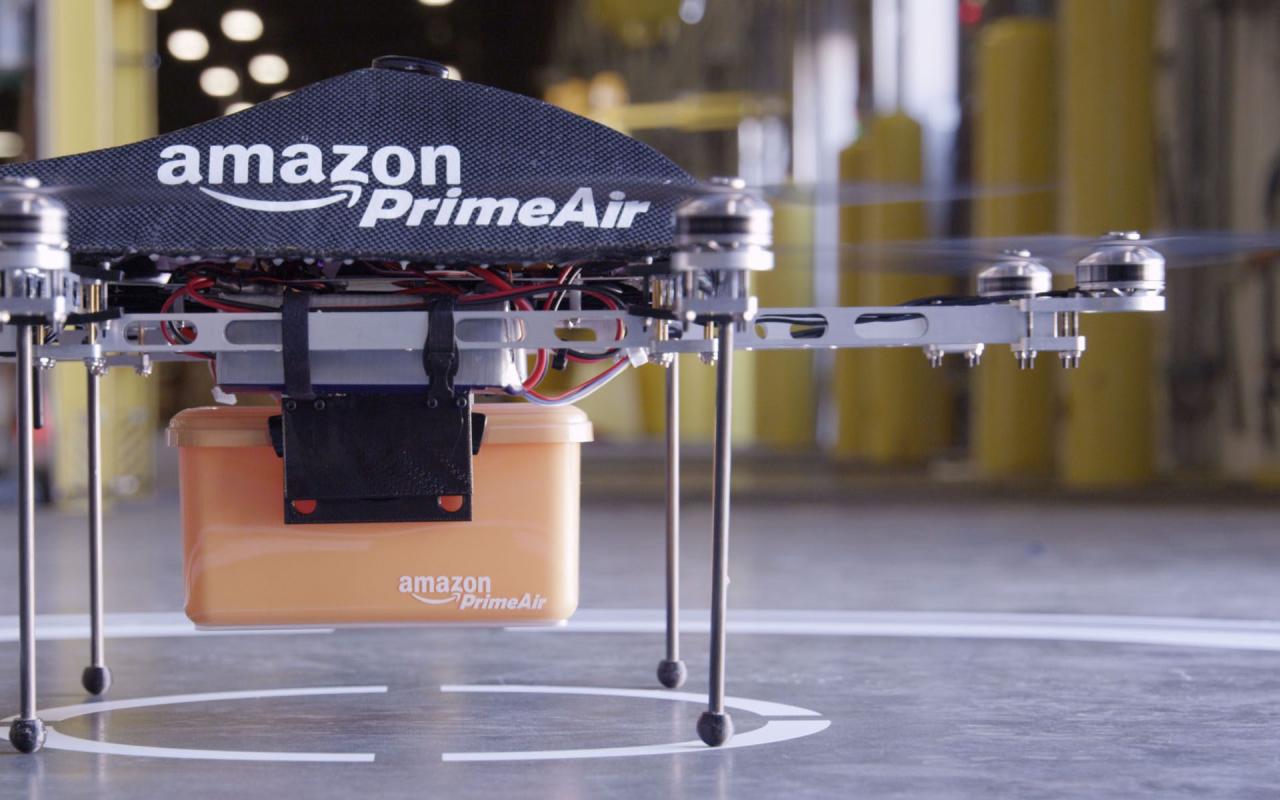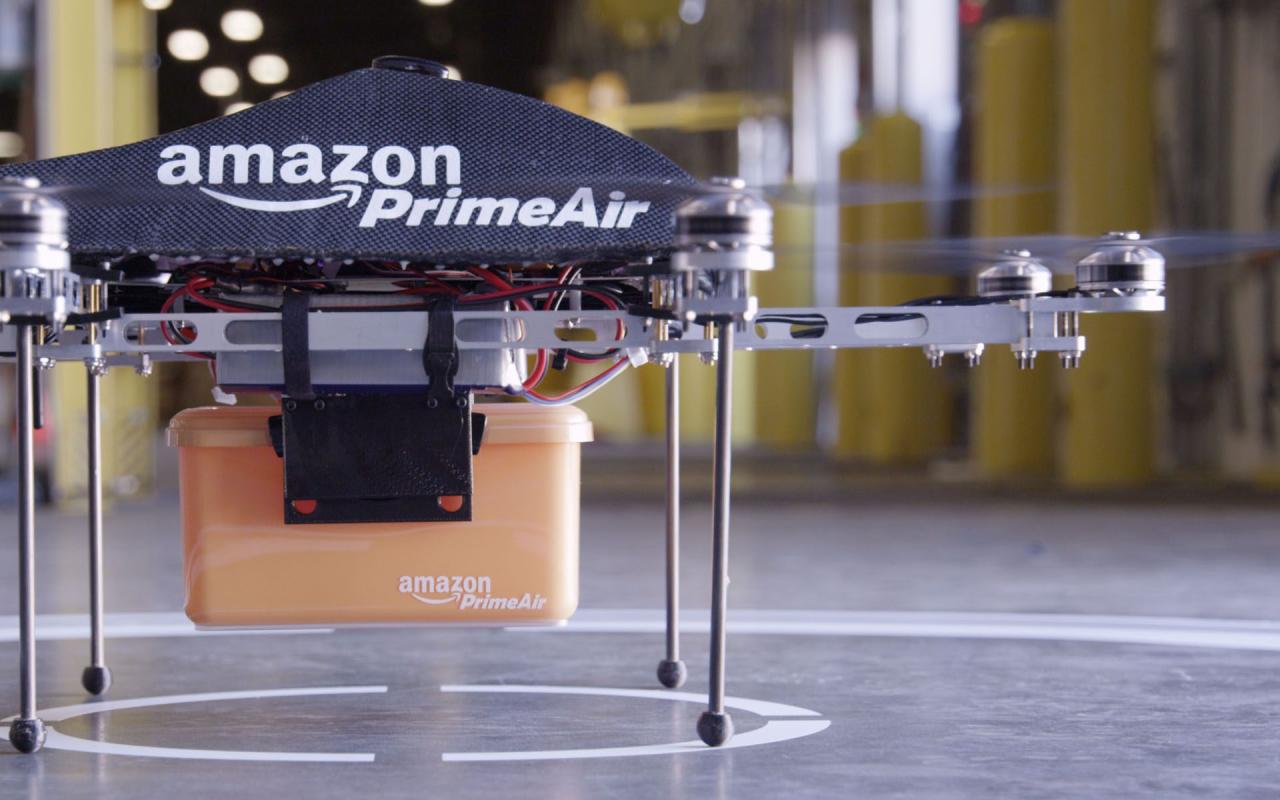Amazon drone delivery locations are rapidly expanding, marking a significant shift in the logistics industry. This exploration delves into the current status of Amazon’s drone delivery program, examining its technological underpinnings, economic impacts, regulatory hurdles, and the evolving customer experience. We’ll look at where these drones are flying, what they’re carrying, and what the future holds for this innovative delivery method.
From the technological marvels of autonomous flight and obstacle avoidance to the complex regulatory landscape and societal implications, Amazon’s drone delivery program presents a fascinating case study in technological advancement and its impact on commerce and daily life. We’ll cover everything from the types of packages eligible for drone delivery to the infrastructure needed to support this ambitious undertaking, painting a comprehensive picture of this evolving delivery system.
Amazon Drone Delivery Program: A Comprehensive Overview
Amazon’s drone delivery program represents a significant leap forward in logistics and e-commerce. This article provides a detailed look at the current status, technological underpinnings, economic and societal impacts, regulatory landscape, and future outlook of this innovative delivery system.
Current Amazon Drone Delivery Program Status

Amazon’s drone delivery program, officially known as Amazon Prime Air, has undergone several stages of development. Initially conceived as a futuristic vision, it has gradually transitioned into a limited but operational reality. The program’s evolution can be charted through key milestones, from initial testing phases to current operational deployments. This is reflected in the geographical expansion of its operational areas and the types of packages it can handle.
| Region | City | Start Date | Current Status |
|---|---|---|---|
| California | Lockeford | 2022 (Approximate) | Operational, limited delivery area |
| Texas | College Station | 2023 (Approximate) | Operational, expanding delivery area |
| (Add more as data becomes available) |
Currently, Amazon Prime Air primarily delivers smaller packages, typically weighing under 5 pounds, that fit within the drone’s carrying capacity. These packages often contain everyday items like books, electronics accessories, and personal care products. The infrastructure requirements for these delivery locations include designated takeoff and landing zones, communication networks for drone control and monitoring, and robust safety protocols to ensure safe and efficient operations.
These zones are strategically located to minimize flight distances and maximize operational efficiency, taking into account factors such as population density and proximity to Amazon fulfillment centers.
So you’re curious about where Amazon’s drone deliveries are headed? It’s a pretty limited area right now, focusing on specific test locations. Think about the scale, though – it’s a big jump from that to a large-scale spectacle like the amazing Niagara Falls drone show , which demonstrates the potential of coordinated drone flights on a much grander level.
Eventually, maybe Amazon’s delivery network will be just as impressive!
Technological Aspects of Amazon Drone Delivery, Amazon drone delivery locations
Amazon’s delivery drones utilize advanced technology for autonomous navigation and obstacle avoidance. These drones incorporate sophisticated sensors, GPS systems, and artificial intelligence algorithms to navigate complex environments safely and efficiently. This sophisticated technology allows the drones to identify and avoid obstacles such as trees, buildings, and even birds, ensuring the safe delivery of packages.
The delivery process involves several steps:
- Order Placement and Processing
- Drone Selection and Preparation
- Flight Planning and Route Optimization
- Takeoff and Navigation
- Package Delivery and Confirmation
- Return to Base
Compared to competitors like Google Wing and Zipline, Amazon’s approach focuses on a fully autonomous system for last-mile delivery, integrating closely with its existing logistics network. Amazon emphasizes safety protocols, including redundant systems, real-time monitoring, and fail-safe mechanisms to prevent accidents and ensure compliance with regulatory standards. These protocols are rigorously tested and regularly updated to address potential risks and enhance safety measures.
Economic and Societal Impacts

Drone delivery offers potential economic benefits for both Amazon and consumers. For Amazon, it can reduce delivery costs, especially in remote areas, increase delivery speed, and enhance customer satisfaction. For consumers, it may lead to faster and more convenient deliveries. However, there are also potential downsides. The environmental impact of drone delivery, particularly regarding energy consumption and noise pollution, needs further assessment and mitigation strategies.
So you’re curious about where Amazon’s drone deliveries are headed? They’re expanding rapidly, focusing on areas with good infrastructure and relatively flat terrain. Think about how impressive drone technology is, like the amazing light shows they put on – check out the incredible Niagara Falls drone show for a stunning example! This kind of precision and coordination is what makes widespread drone delivery a real possibility, so expect to see those Amazon drones buzzing around more locations soon.
The technology’s impact on employment is also a concern, potentially displacing jobs in traditional delivery services while creating new opportunities in drone maintenance, operation, and related fields.
- Increased efficiency and speed of delivery
- Reduced delivery costs for both Amazon and consumers
- Enhanced accessibility to remote areas
- Potential job displacement in traditional delivery sectors
- Potential for increased noise and air pollution
Regulatory and Legal Landscape
Drone delivery operates within a complex regulatory framework that varies significantly across different countries and regions. Regulations cover aspects such as airspace management, pilot certification, drone registration, and safety standards. Amazon, like other drone delivery companies, faces ongoing legal challenges related to airspace access, data privacy, and liability in case of accidents. The regulatory landscape is constantly evolving, with new rules and guidelines being introduced to address the safety and security concerns associated with widespread drone deployment.
These regulations differ significantly, for example, in the US, FAA regulations govern drone operations, while in Europe, EASA regulations are applicable.
Customer Experience and Future Outlook
A hypothetical customer testimonial might read: “I was amazed how quickly my package arrived! The drone landed silently in my backyard, and the package was securely delivered. It was a truly convenient and futuristic experience.” Drone delivery offers significant advantages for customers in remote areas, improving access to goods and services. Beyond package delivery, Amazon’s drone technology holds potential applications in areas such as search and rescue, infrastructure inspection, and emergency aid delivery.
Over the next five years, we can expect a significant expansion of Amazon’s drone delivery network, with more operational locations and expanded service areas, potentially covering more package types and regions. This expansion will be driven by technological advancements, regulatory approvals, and increasing consumer demand.
Outcome Summary: Amazon Drone Delivery Locations

Amazon’s drone delivery program is more than just a futuristic concept; it’s a rapidly evolving reality reshaping how we receive packages. While challenges remain in areas like regulation and widespread adoption, the potential benefits for both consumers and the company are undeniable. The future likely holds a much larger drone delivery network, impacting not only package delivery but potentially revolutionizing other industries as well.
The convenience, speed, and efficiency of drone delivery promise to redefine our expectations of shipping and receiving goods.
FAQ Overview
How long does a drone delivery take?
Amazon’s expanding drone delivery locations are pretty cool, right? But remember, even the best tech can have glitches; check out this article about the orlando drone show malfunction to see how things can go wrong with large-scale drone operations. It highlights the importance of safety and reliability as Amazon continues to develop its drone delivery network.
Delivery times vary depending on distance and other factors, but generally aim for much faster delivery than traditional methods.
What happens if the drone malfunctions during delivery?
Amazon has built-in safety protocols, including multiple redundancies and failsafes. In case of a malfunction, the drone is designed to land safely and alert Amazon support.
Are there weight restrictions for drone deliveries?
Yes, there are weight limits on packages eligible for drone delivery. These limits are designed for safety and operational efficiency.
What types of weather conditions affect drone deliveries?
Adverse weather conditions, such as heavy rain, strong winds, or snow, can significantly impact or halt drone operations for safety reasons.
